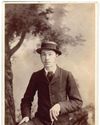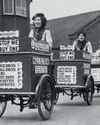Whether you love Ilford HP5, Fuji Velvia or Kodak Portra there are many ways to get the look of classic film with the convenience of digital.

Emulating the look of film with a digital camera can be challenging, but there are plenty of options available to recreate the vintage look and feel of classic films like Ilford HP5, Velvia and Kodak Portra. The film look has become very popular with wedding, portrait and street photographers in recent years and can add a cinematic feel to an image delivering strong or soft contrast, deep or subtle colours, and film-like grain. It can also help to deliver emotion and realism.
One way of achieving the look is to use a camera with built-in film simulation modes. Fujifilm cameras are a great example as the film profiles they offer have been developed through years of experience. This allows you to change the look and feel of the image without the need for any post processing. Monochrome is also wonderfully handled in more recent models like the X-T2 and the X-Pro 2 with the ACROS film mode, which adds a fantastic grain-like texture that enhances the conversion.
Choosing an image to convert takes some thought. Some styles of photography suit film simulations better than others (as mentioned above). Portraits and urban images work well when converted, adding a classic film effect that can bring your images to life and give your portfolio a definitive look.
Film effects using Photoshop
For intermediate Photoshop users there are several ways to recreate the film look using either Adobe Camera Raw with raw files or Adjustment layers in Photoshop. One method I particularly like for adding film effects to colour or monochrome images is adding a channel mixer adjustment layer in overlay mode – that way you can create your own colour maps and save them as presets.
This story is from the {{IssueName}} edition of {{MagazineName}}.
Start your 7-day Magzter GOLD free trial to access thousands of curated premium stories, and 9,000+ magazines and newspapers.
Already a subscriber ? Sign In
This story is from the {{IssueName}} edition of {{MagazineName}}.
Start your 7-day Magzter GOLD free trial to access thousands of curated premium stories, and 9,000+ magazines and newspapers.
Already a subscriber? Sign In

140 years of change
AP has become the world’s oldest surviving consumer photo magazine because we have moved with the times, says Nigel Atherton

Preserving history in platinum
A deep dive into the meticulous art of platinum printing, and the collaboration between the Royal Geographical Society and Salto Ulbeek. Mike Crawford explores how they brought historical photographs to life with enduring beauty and precision

Life in the past lane
What was life like for an amateur photographer in 1884? John Wade takes a trip back in time

Choice cuts
How many trillions of photographs must have been taken in the past 140 years? Amy Davies asked some of our regular contributors for their favourites....a difficult task, to say the least

How good a camera can you buy for just £140?
Three members of the AP team see what they can find for the money

Round Five: The Best of the Rest
The APOY judges choose their favourite images that didn’t make the top ten of our Landscapes category

Amateur Photographer of the Year
Here are the top ten images uploaded to Photocrowd from Round Five, Landscapes, with comments by the AP team and our guest judge

FILM STARS A lifetime of landmarks
Cameras that hit the headlines between then and now. John Wade is your guide

140 years of Amateur Photographer
As AP celebrates its 140th birthday next month, Nigel Atherton looks back at its glorious past

John Wade considers...World War II: Home Front 1940, by A.J O'Brien
Say the word 'Wall's' to those of a certain age and two things spring to mind: sausages and ice cream.